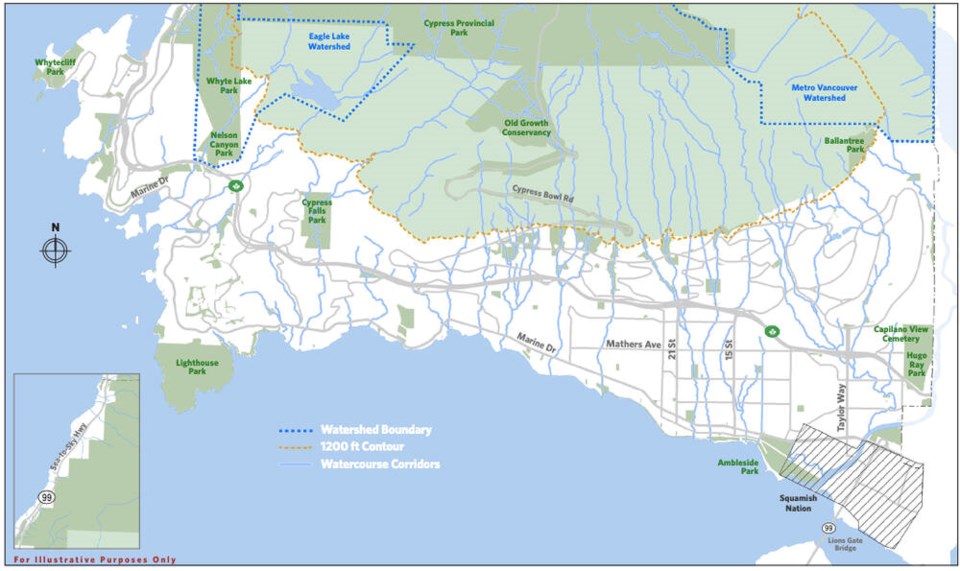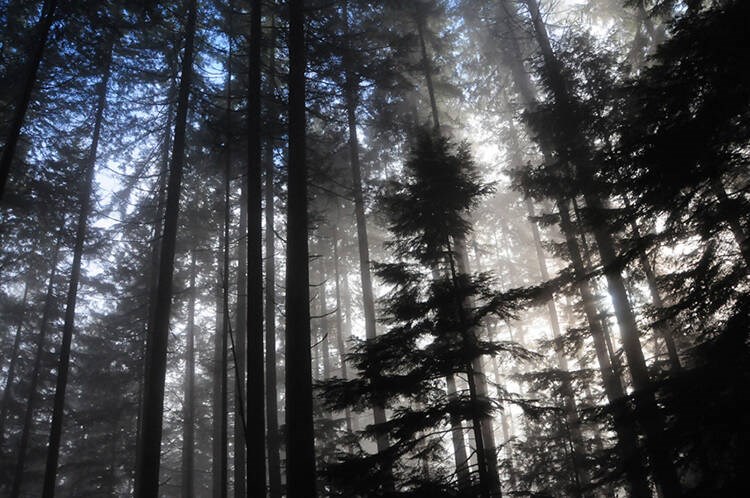West Vancouver council has unveiled plans to create a lasting environmental legacy by dedicating a vast swath of district-owned forest lands as park.
Council voted unanimously this week to ask staff to report back within 90 days with a park dedication bylaw for about 2,500 acres of municipal land above the 1,200-foot contour on the hills above the community.
If passed by council, a park dedication bylaw would preserve a large chunk of what are usually referred to as West Vancouver’s “Upper Lands.” The area is currently mostly made up of undeveloped forest land and hiking trails at higher elevations above the British Properties between the municipality’s Eagle Lake watershed in the west and Metro Vancouver’s Capilano watershed in the east.
Plans to preserve the area for both recreation and as a critical environmental reserve for the Lower Mainland have long been under discussion through various planning processes at the district over the past 10 years and has been recommended by previous municipal task forces that looked into the issue.

According to the district, the community plan has limited development of the lands above the 1,200-foot mark back as far as 1958, and the area has long been considered a park by the community.
But the area has never formally been dedicated as a park.
Doing so would serve to protect the area and its environmental values in perpetuity, council members said Monday.
Mayor Mark Sager likened the move to decisions protecting areas like Pacific Spirit Park on Vancouver’s west side and Stanley Park.
“It’s a real statement to the other communities around Metro Vancouver,” he said.
Making the area a park sends a “clear message out that we want to preserve this property,” said Sager, adding, “It’s a very wise decision.”
Council noted the area includes one of the last remaining old growth forests on the North Shore.
Council did not discuss what practical change might result from the park designation.
Coun. Nora Gambioli said Monday it would be a good idea to have that information before voting on the park dedication. “There are expectations that go along with calling it a park,” she said – including providing public parking, and upkeep of trails and bridges.
When the district dedicated Whyte Lake Park formally as a park about 10 years ago, in the western part of the Upper Lands, it became much busier and “full of people and dogs,” she said, noting there are costs to maintaining park land.
Coun. Sharon Thompson noted, however, that Whyte Lake already had an existing trail and parking lot before it was dedicated as a park.
Coun. Christine Cassidy said she was in favour of creating a park but also wants assurance “we’re not taking on another asset” that will require money for upkeep.
At various points in time, the district has done work to shore up trails in the Upper Lands, and to maintain and replace bridge crossings.
A few years ago, the municipality also made deals to put the North Shore Mountain Bike Association in charge of certain downhill mountain bike trails in the Upper Lands.
Many areas are used as park in municipalities without formally being designated as park land.
Formally dedicating municipal land for park requires a vote of two-thirds of council. There aren’t many hard and fast legal restrictions about what can and can’t happen in a park. Once an area has been dedicated as park, however, land can only be removed from that park with approval of the voters through either a referendum or alternative approval process and money from sale of that land must go back into park acquisition.




